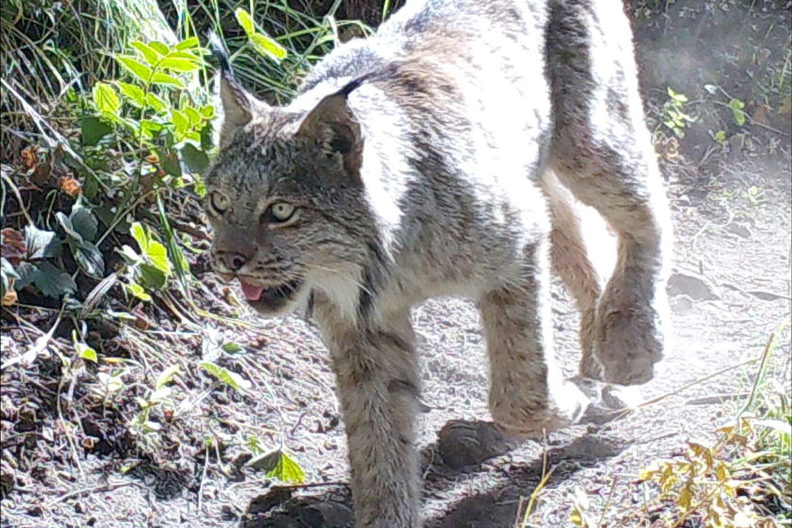The U.S. Fish and Wildlife Service is seeking public input on a draft recovery plan for the lower 48 distinct population segment of Canada lynx, informed by an updated species status assessment.
The Canada lynx lower 48 DPS includes populations in northern Maine and northeastern New Hampshire, northeastern Minnesota, northwestern Montana and north Idaho, northcentral Washington, and southwestern Colorado. Researchers have also documented Canada lynx in the Greater Yellowstone Area of northwest Wyoming and southwestern Montana. Federal agencies manage a significant portion of these lands.
Canada lynx are native to North American boreal forests and depend heavily on snowshoe hare populations, their main prey. Lynx have unique adaptations for moving through deep snow, such as their snowshoe-like paws and long legs. Under the Endangered Species Act, a DPS is a portion of a species or subspecies’ population or range and is described geographically instead of biologically.
In 2000, the Canada lynx DPS was designated as threatened under the ESA mainly due to insufficient regulations and protections. The Service and conservation partners at state and federal agencies say they have made progress in creating science-based conservation measures to address these issues.
Currently, the primary obstacle to the long-term conservation of this DPS is the projected impacts of global climate warming on boreal forest habitats and the species depending on them, including lynx and snowshoe hares.
Recovery plans are non-regulatory documents required by the ESA that serve as a road map toward ensuring a species’ long-term survival in the wild. Recovery plans outline site-specific management actions that contribute to species recovery, describe the time and cost estimates for implementing those actions, and outline measurable criteria for delisting.
The announcement marks the beginning of a public comment period for the public to submit comments through January 30, 2024, at [email protected].
The draft recovery plan and its associated documents, including the notice of availability, species status assessment report, and recovery implementation strategy, can be found at https://ecos.fws.gov/ecp/species/3652\.
The Service anticipates publishing a final recovery plan within one year.
The lynx is a medium-sized cat with long legs, large, well-furred paws, long tufts on the ears, and a short, black-tipped tail. The winter pelage of the lynx is dense and has a grizzled appearance with grayish-brown mixed with buff or pale brown fur on the back, and grayish-white or buff-white fur on the belly, legs and feet.
Summer pelage of the lynx is more reddish to gray-brown. Adult males average 10 kilograms (22 pounds) in weight and 85 centimeters (33.5 inches) in length (head to tail), and females average 8.5 kilograms (19 pounds) and 82 centimeters (32 inches). The lynx’s long legs and large feet make it highly adapted for hunting in deep snow. The distribution of lynx in North America is closely associated with the distribution of North American boreal forest.
In Canada and Alaska, lynx inhabit the classic boreal forest ecosystem known as the taiga. The range of lynx populations extends south from the classic boreal forest zone into the subalpine forest of the western United States, and the boreal/hardwood forest ecotone in the eastern United States. Forests with boreal features extend south into the contiguous United States along the North Cascade and Rocky Mountain Ranges in the west, the western Great Lakes Region, and northern Maine. Within these general forest types, lynx are most likely to persist in areas that receive deep snow and have high-density populations of snowshoe hares, the principal prey of lynx.
The species historical range included Alaska, Colorado, Idaho, Maine, Michigan, Minnesota, Montana, New Hampshire, New York, Oregon, Utah, Vermont, Washington, Wisconsin, Wyoming.

